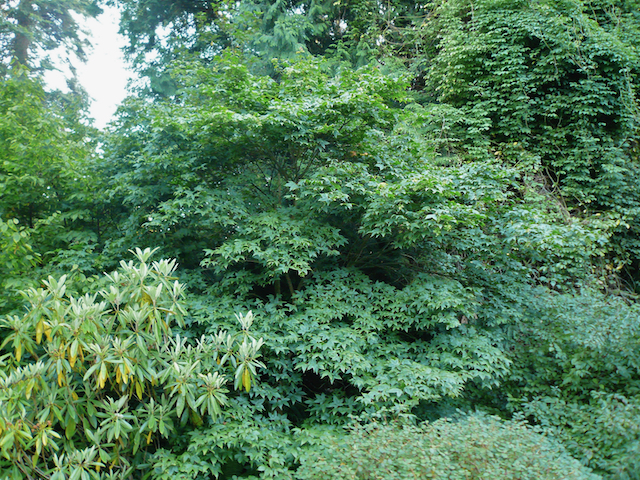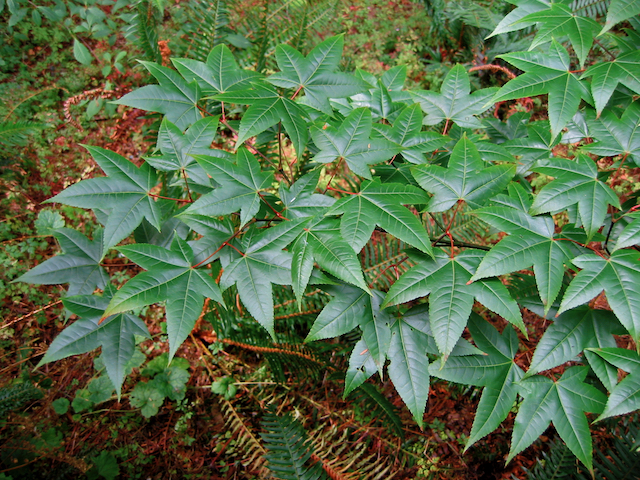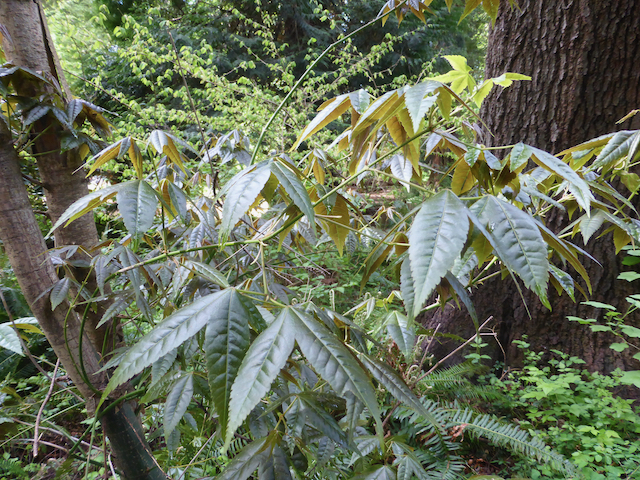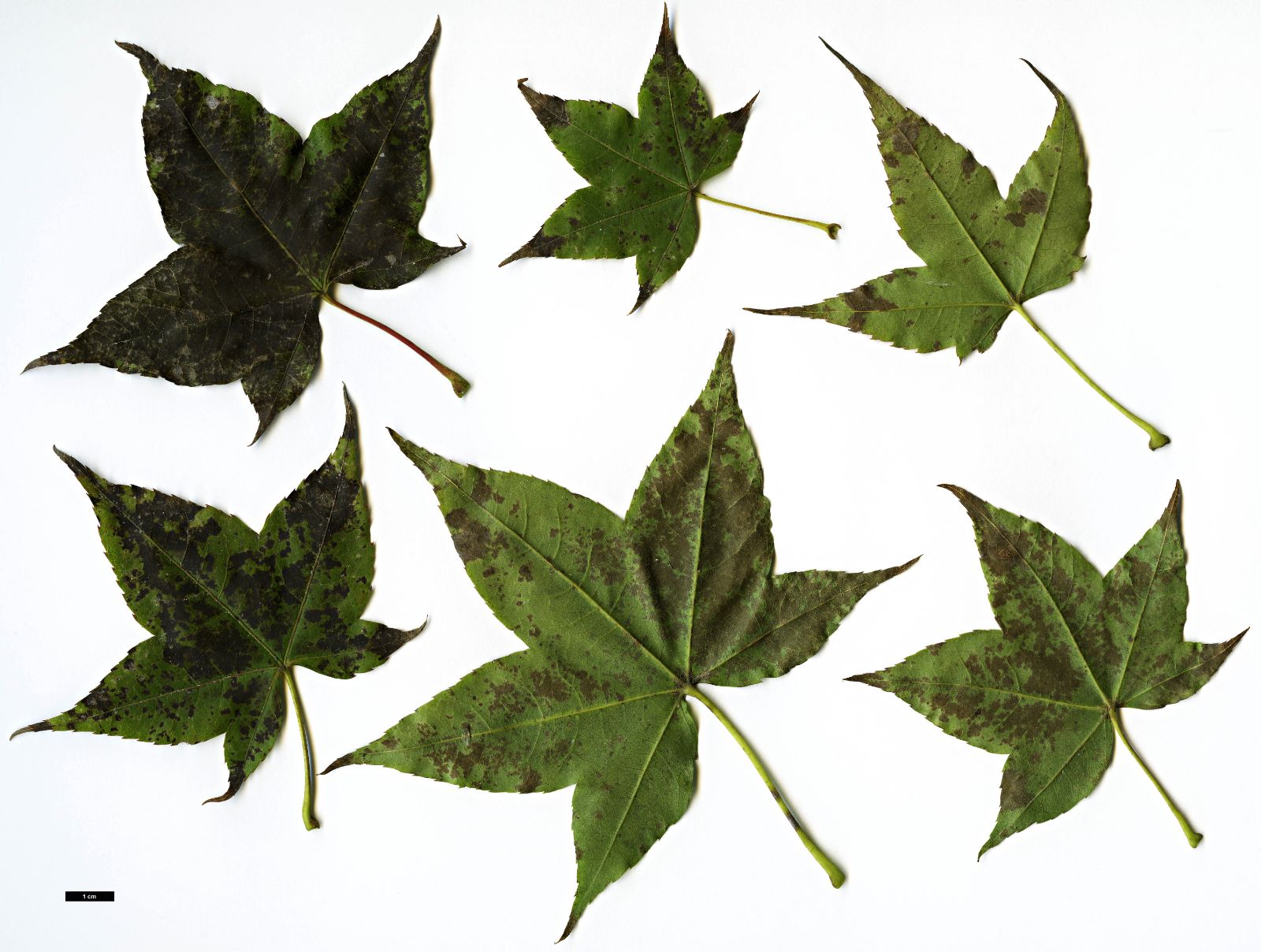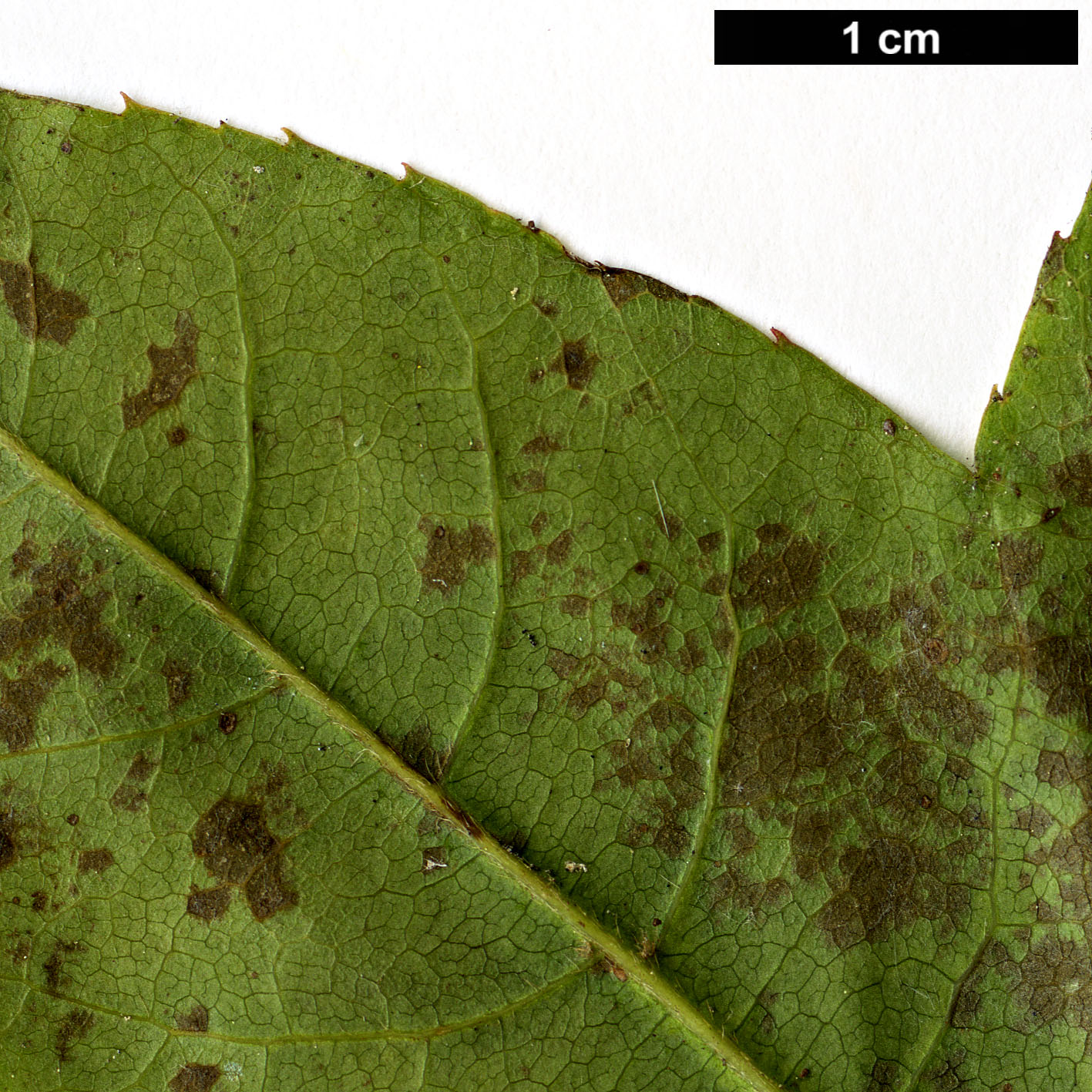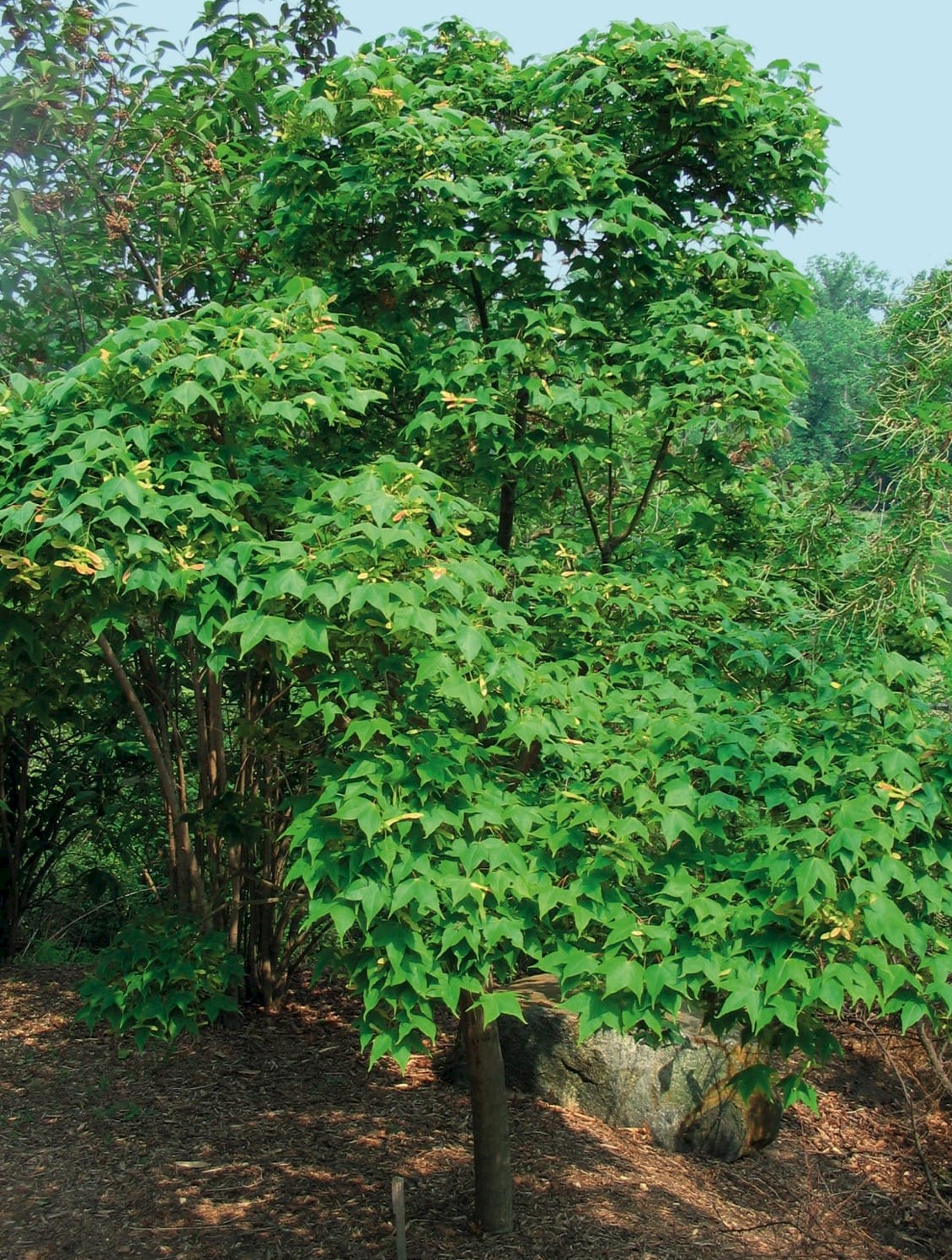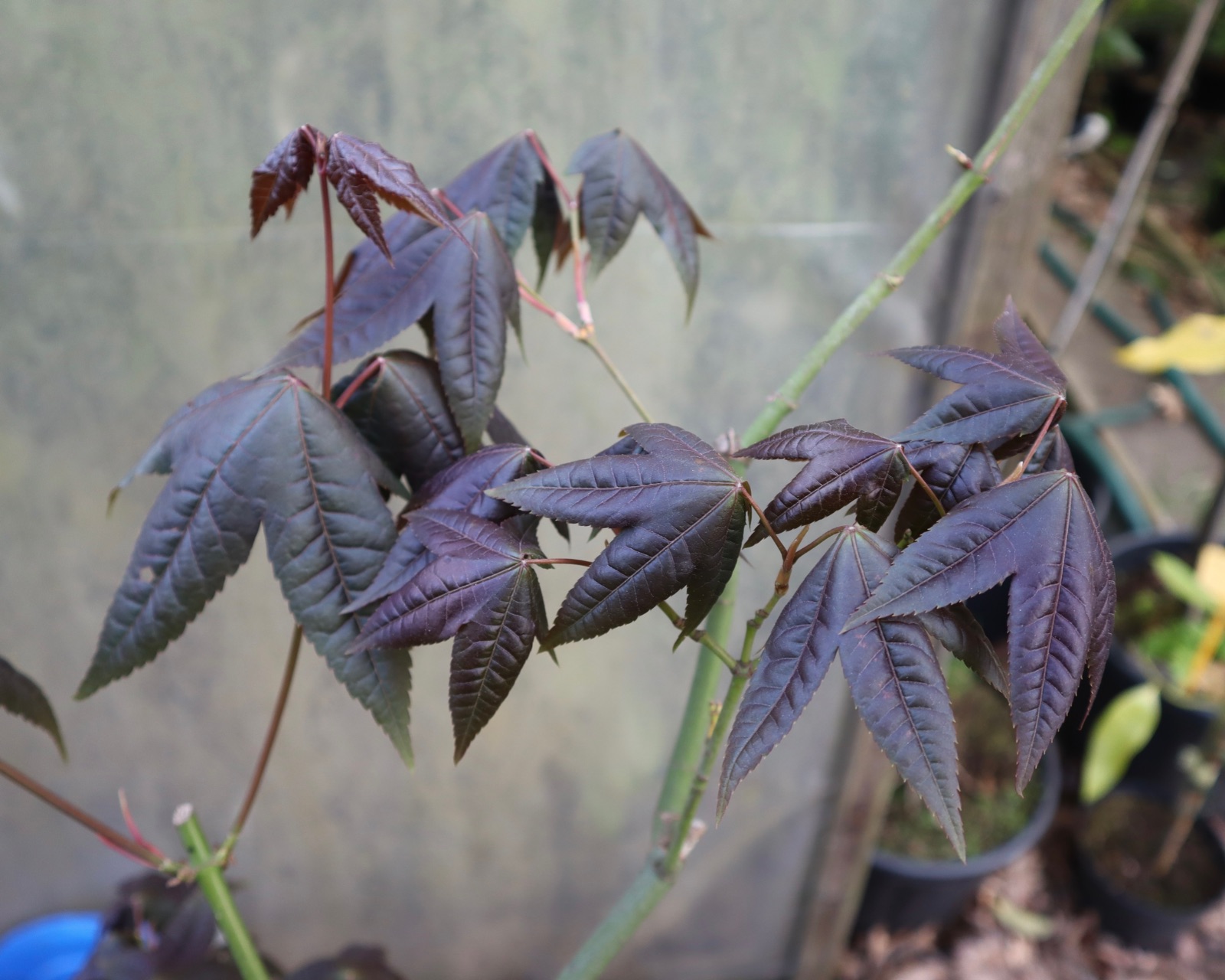Acer pubinerve
Sponsor
Kindly sponsored by
Lawrence Banks
Credits
John Grimshaw, Ross Bayton & Dan Crowley (2020)
Recommended citation
Grimshaw, J., Bayton, R. & Crowley, D. (2020), 'Acer pubinerve' from the website Trees and Shrubs Online (treesandshrubsonline.
Genus
- Acer
- Sect. Palmata, Ser. Sinensia
Synonyms
- Acer wuyuanense W.P. Fang & Y.T. Wu
- Acer campbellii subsp. chekiangense (W. P. Fang) A. E. Murray
Other taxa in genus
- Acer acuminatum
- Acer amplum
- Acer argutum
- Acer barbinerve
- Acer buergerianum
- Acer caesium
- Acer calcaratum
- Acer campbellii
- Acer campestre
- Acer 'Candy Stripe'
- Acer capillipes
- Acer cappadocicum
- Acer carpinifolium
- Acer 'Cascade'
- Acer caudatum
- Acer ceriferum
- Acer chapaense
- Acer chienii
- Acer circinatum
- Acer cissifolium
- Acer × conspicuum
- Acer cordatum
- Acer coriaceifolium
- Acer × coriaceum
- Acer crataegifolium
- Acer davidii
- Acer diabolicum
- Acer distylum
- Acer divergens
- Acer duplicatoserratum
- Acer elegantulum
- Acer erianthum
- Acer 'Esk Flamingo'
- Acer fargesii
- Acer fenzelianum
- Acer flabellatum
- Acer forrestii
- Acer franchetii
- Acer × freemanii
- Acer fulvescens
- Acer 'Gimborn'
- Acer ginnala
- Acer glabrum
- Acer 'Gold Coin'
- Acer granatense
- Acer grandidentatum
- Acer griseum
- Acer heldreichii
- Acer henryi
- Acer × hillieri
- Acer hookeri
- Acer hyrcanum
- Acer japonicum
- Acer kawakamii
- Acer komarovii
- Acer laevigatum
- Acer laurinum
- Acer laxiflorum
- Acer lobelii
- Acer longipes
- Acer macrophyllum
- Acer mandshuricum
- Acer maximowiczianum
- Acer maximowiczii
- Acer metcalfii
- Acer miaotaiense
- Acer micranthum
- Acer 'Mindavi'
- Acer 'Minorient'
- Acer miyabei
- Acer miyabei × campestre
- Acer monspessulanum
- Acer morifolium
- Acer 'Mozart'
- Acer oblongum
- Acer obtusifolium
- Acer okamotoanum
- Acer oliverianum
- Acer opalus
- Acer orientale
- Acer palmatum
- Acer papilio
- Acer pauciflorum
- Acer pectinatum
- Acer pensylvanicum
- Acer pentaphyllum
- Acer pentapotamicum
- Acer pictum
- Acer pilosum
- Acer pinnatinervium
- Acer platanoides
- Acer platanoides × amplum
- Acer platanoides × truncatum
- Acer × pseudoheldreichii
- Acer pseudoplatanus
- Acer pseudosieboldianum
- Acer pycnanthum
- Acer rubescens
- Acer rubrum
- Acer rufinerve
- Acer saccharinum
- Acer saccharum
- Acer sempervirens
- Acer 'Serpentine'
- Acer serrulatum
- Acer shenkanense
- Acer sieboldianum
- Acer sikkimense
- Acer 'Silver Cardinal'
- Acer 'Silver Ghost'
- Acer sinense
- Acer sinopurpurascens
- Acer spicatum
- Acer stachyophyllum
- Acer taronense
- Acer tataricum
- Acer tegmentosum
- Acer tenellum
- Acer tetramerum
- Acer tibetense
- Acer tonkinense
- Acer triflorum
- Acer truncatum
- Acer tschonoskii
- Acer turkestanicum
- Acer tutcheri
- Acer ukurunduense
- Acer velutinum
- Acer wardii
- Acer 'White Tigress'
- Acer wilsonii
- Acer × zoeschense
Tree 5–10(–15) m. Bark dark grey, brown or purple. Branchlets pale green or purplish-green, slender, glabrous or pubescent. Leaves deciduous, broadly pentagonal in outline, base subcordate, 7–12 × 11–14 cm across, palmately 5-lobed, lobes one-third to half of the length, dark green and largely glabrous, margins slightly serrate, usually entire towards lobe bases, apically caudate; petiole 4–5 cm long, densely pubescent. Inflorescence paniculate to racemose, few-flowered. Flowers 5-merous, usually dioecious; sepals purplish-green, petals white, slightly shorter than sepals, stamens 8, inserted inside the glabrous nectar disc, ovary densely pubescent. Samaras ~3 cm long, yellowish, wings spreading horizontally. Flowering in April, fruiting in October (China). (van Gelderen et al. 1994; Xu et al. 2008).
Distribution China Anhui, northern Fujian, Guangdong, northen Guangxi, southern Guizhou, eastern Jiangxi, Zhejiang.
Habitat The Flora of China gives 'Forests at around 100 m asl', but see main text.
USDA Hardiness Zone 7-8
RHS Hardiness Rating H5
Conservation status Least concern (LC)
In North American collections as disparate as the David C. Lam Asian Garden in Vancouver and the US National Arboretum in Washington DC, Acer pubinerve (labelled A. wuyuanense) has won high praise as a beautiful small tree with great garden potential. In both these locations it is grown from seed collected by the 1988 NACPEC expedition to Huangshan, Anhui Province, China, near the Chi Guang Ge Temple at 640 m asl. As observed in May 2006, two specimens at the US National Arboretum had made rounded trees, approximately 2.5 m tall and equally wide. A notable feature was the abundance of pale green samaras nestling among the leaves. For Douglas Justice in Vancouver, however, it is the emerging foliage that draws attention. Memorably, he describes it as being like ‘oily, dark brown chicken feet’ (D. Justice, in Wharton et al. 2005), although his suggested English name Chocolate Maple is a more pleasing descriptor! This dark spring growth emerges from dark twigs, but becomes a rich green. In Vancouver, having been five plants in 2009, there are four as of Spring 2020, growing up to c. 7 m tall though somewhat reaching in partial shade (D. Justice, pers. comm. 2020). The largest, finest specimen is notable for being markedly later into leaf than the others, though all are grown from the same seed batch (D. Justice, pers. comm. 2020). The foliage of these plants shows clear resemblance to that of A. elegantulum and is unsuprising that Xu et al. (2008) state that they are tricky to distinguish and at some point might be combined.
While evidently an exceptionally interesting species, and of great value for smaller gardens, as of 2009 the species was unknown in Europe. The plants (then seedlings) at Westonbirt mentioned by Grimshaw & Bayton (2009) appear to be of hybrid origin. Though attractive in autumn colour, with shades of red and purple, they lack the spring gloss and colour and their leaves are not a match for those of true A. pubinerve. Some trees from the Huangshan were distributed from Castle Howard by James Russell in the late 1980s, but none grow there now (T. Kirkham, pers. comm. 2007), while one donated to Philippe de Spoelberch was dead by 1992 (K. Camelbeke, pers. comm. 2007). It is now present in Europe, though somewhat uncommon in European collections, having been available from Botanical Treasures Nursery, Antwerpen, through which private collectors acquired it (E. Davis, pers. comm. 2020). Young plants so named have also recently been added to the collections at RBG Kew and Windsor Great Park. It is also part of the collection at Rogow Arboretum, Poland (P. Banaszczak, pers. comm. 2020).

